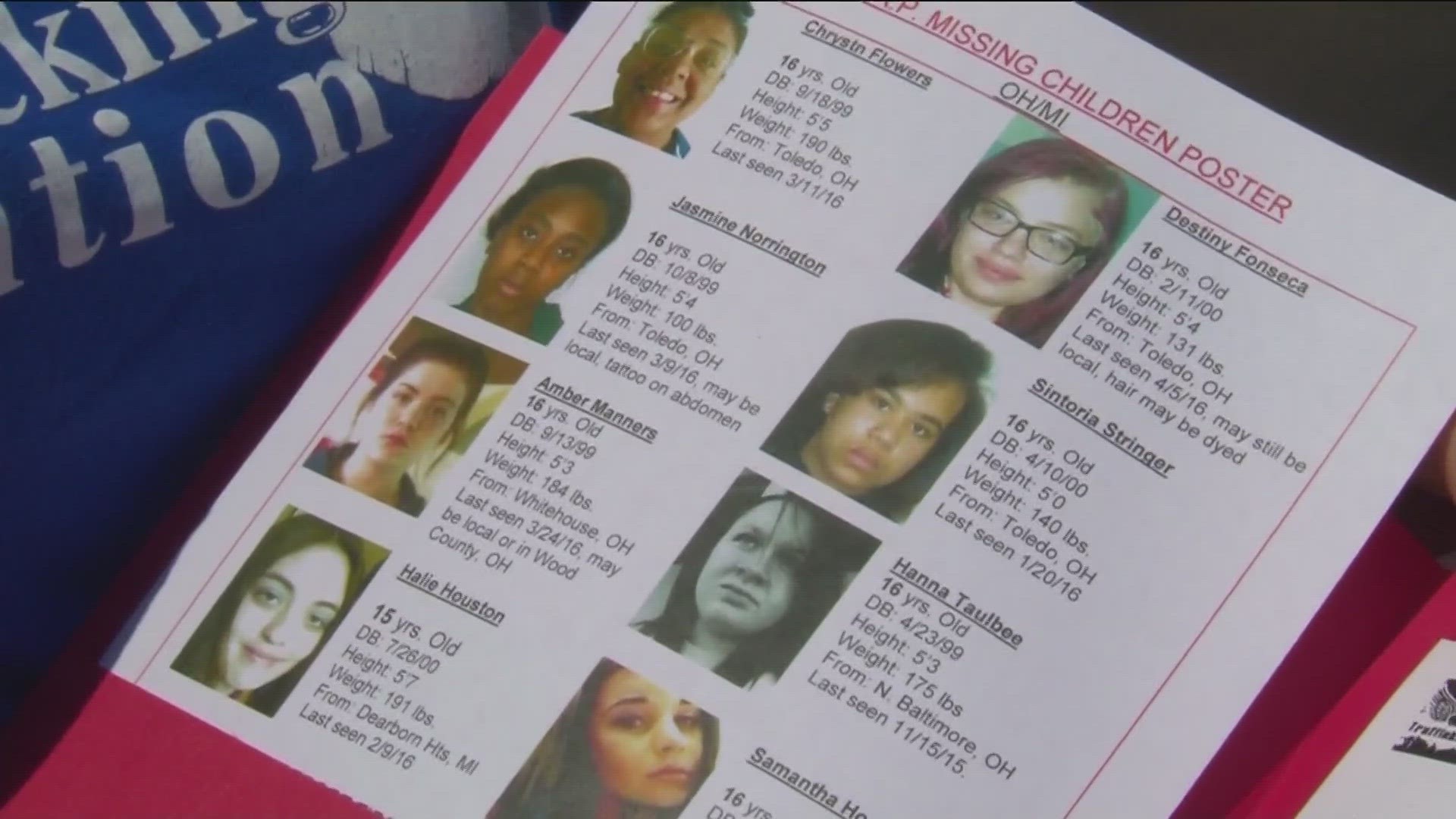TOLEDO, Ohio — Experts at the National Human Trafficking Hotline define the act of human trafficking as a form of modern-day slavery.
Since 2007, in Ohio, the hotline has received 11,224 signals which encompass calls and emails to the hotline, online and SMS reports. Since its inception, NHTH said it has identified 3,102 cases of human trafficking with 6,013 victims in those cases.
Dr. Celia Williamson, the University of Toledo's executive director of the Human Trafficking and Social Justice Institute, said human trafficking is a 24-hour, 7-days-a-week danger and it does not matter the season or even the time of day.
"The less I know, then the more dangerous my community could potentially be for people who don't understand what they're looking at or don't understand that it even exists," Williamson said.
It's likely many Midwesterners won't or don't believe trafficking happens around them, Williamson explained, because many don't know how to identify the issue and tend to blame victims.
Both Williamson and Ohio State Highway Patrol spokesperson Sgt. Ryan Purpura said real human trafficking is nothing like dramatized versions that can be seen in television shows and movies.
"It's not that we just pull a car over and we see a bunch of people in the back of this vehicle," Purpura said. "There might be something more under the radar that's going on that we want to look for."
At any given time in 2021, approximately 27.6 million people were in forced labor, according to the "Global Estimates in Modern Slavery" study released by the International Labour Organization and the Walk Free Foundation in September 2022.
A further breakdown of the numbers shows "17.3 million are exploited in the private sector, 6.3 million in forced commercial sexual exploitation, and 3.9 million in forced labour imposed by state.”
There aren't always tell-tale signs of a blanket description of human trafficking. Purpura said each situation law enforcement encounters is different, so it's up to each individual officer to look for other signs.
"We look for things out of the ordinary," Purpura said. "Maybe there's some branding on the person or maybe they're lying about their name or their identity. Maybe they say they're 25 years old, but they look like they're 16 or 17."
While technically anyone can be a target, Williamson said studies have shown youth of color in the LGBTQ+ community, foreign born and those in poverty are most at risk. These groups tend to be easier prey for traffickers since they are in need of something, and traffickers tend to exploit that need. Therefore, everyone should learn to trust their gut when things don't add up.
"Somebody who's 14 or 15 but maybe their boyfriend is 27," Williamson explained. "Somebody that has money in their pocket now. Somebody that has the brand new iPhone. Where did you get the new bracelet?"
Both Purpura and Williamson agree that if you see something, don't assume it's not your place or not your business. By taking the time, you can remain anonymous, to call the National Human Trafficking Hotline: 1-888-373-7888, you could be a big help.
"You might be that person that tips that scale to uncover something larger going on and maybe save some lives in the process," Purpura said.
Williamson explained the two more things everyone can do:
(1) Do not victim blame. She said by calling children terms such as hypersexualized or 'fast,' people don't realize that a child, or children, may be abused versus trying to be an adult prematurely.
(2) Be a confidant to your child. Gone are the days of not being a friend to your child, if they don't trust you or won't confide in you, it leads them to a risky path of decision-making without their parents guiding them in the right direction.
MORE FROM WTOL:

